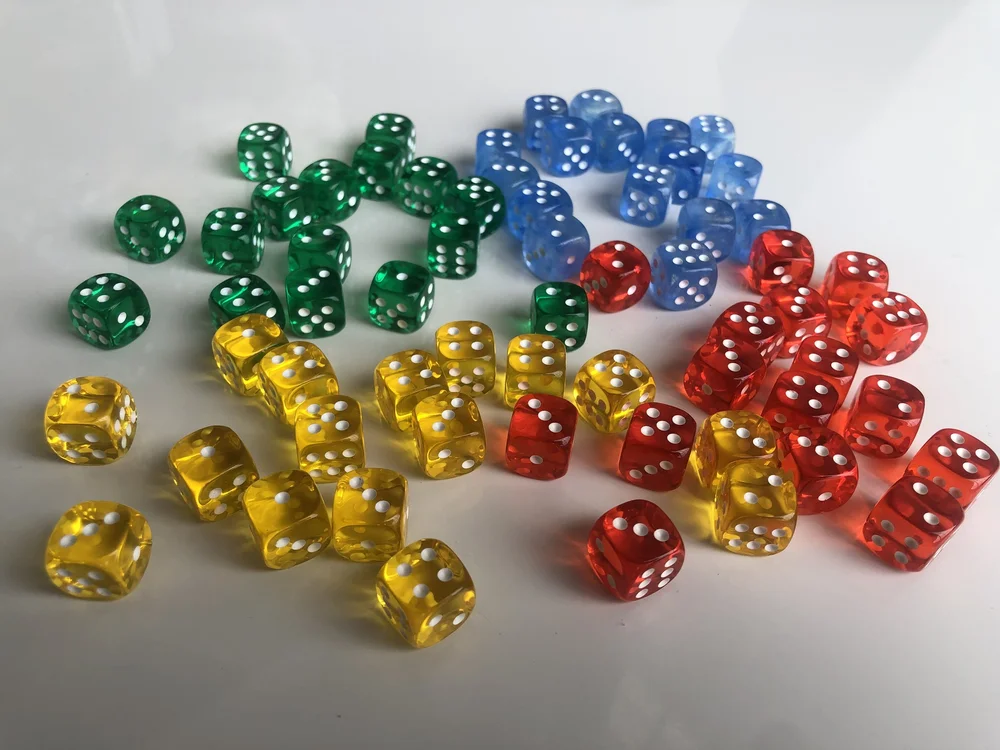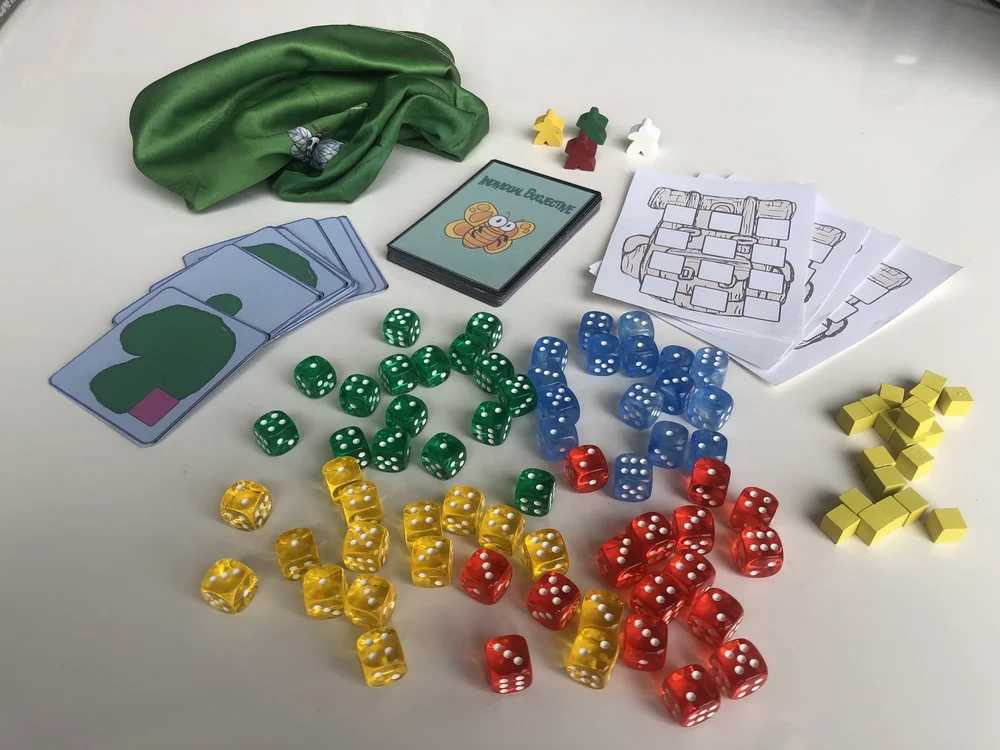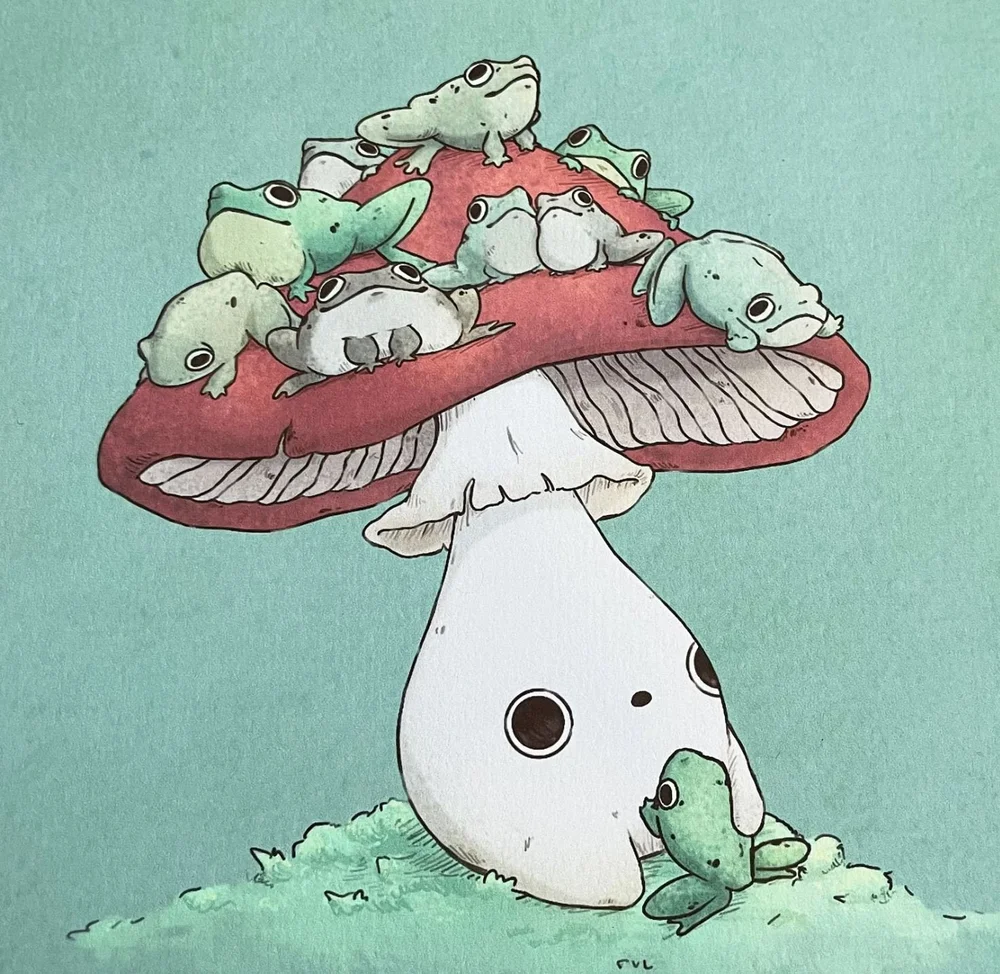We continue on our Froggy Bazaar diaries and identify the game’s target gamer profile and market comps. Looking at the overall project will help us identify its target MSRP, complexity, and art direction. This will trickle down into every...
[Read our full Froggy Bazaar series here: www.pineislandgames.com/bazaar-diaries]
One of my biggest lessons learned from publishing two board games (and counting) is to start thinking about the big picture earlier. That is, to define the overall brand direction for the game including identifying its target gamer (see our article on psychographic profiles), and its market comps.
Having a good handle on the overall direction and vision for the game can help direct all of your future decisions from art direction, to marketing, to target MSRP and what that means for component skew and even box size.
So, let’s dive into Froggy Bazaar
Defining Comps
Froggy Bazaar definitely has strategic depth, but at its core it is quick to learn (three game actions), and a quick play (like ~8 minutes per player). It fits firmly into the family weight gateway game category.
Which means its comps are Ticket to Ride First Journey, Catan Junior, and Honga.

Defining our market comps will help inform a lot of our future decisions. Some of which I am already thinking through…
MSRP, Player Count, The Box & Components
Ticket to Ride First Journey & Catan Junior MSRP for $35, and Honga is a bit more expensive at $49. All of the games play at least 2-4 players.
If we want Froggy Bazaar to be competitive outside of the hobby market we need to make sure it plays at least 4, and keep the MSRP in the $35-$39 range.
This is a bit of a challenge for a couple of reasons.
Froggy Bazaar is component heavy requiring ~16 dice per player.
We are a small publisher so don’t benefit from the economies of scale of larger houses.
The game is fairly modular, so for the cost of ~16 dice and some either card stock or chip board I can add a player – meaning printing the game at 4 players is substantially more expensive than printing it at a 2-3 player count (but the 4 player count is important to our target audience).

That’s a lot of dice
I haven’t queried manufacturers to find out the cost of the game at ~64 dice and 4 players, but I don’t expect it to be cheap. I know that keeping a laser focus on unit economics will be very important if we want to publish a profitable game.
Ways to Keep Costs Down
A rule of thumb is that board games retail for about 5x their landed cost. This is because games sell into distribution at about 18-20% msrp, which works out to a 50% unit margin. For reference Nut Hunt which we are now selling for $39 (we recently reduced the price from $49) had a landed cost of $9.68. The breakdown was:
Manufacture & Component Testing - $29,415 / 4,000 = $7.35 per game
Freight - $6,154 / 3,732 = $1.65 per game
Customs Inspection Fees - $2,529 / 3,732 = $0.68 per game
This was for a 4,000 unit print run with most of the units shipped Stateside. The $2,529 customs inspection fee was due to our container being pulled for inspection (which is a rare occurrence).
As you can see, we are breaking the 5x rule for Nut Hunt.
Our original MSRP was $49, but the $39 price point resonates more with consumers and is in line with peers (also a family weight gateway game although a bit higher complexity & component skew than its closest comps).

You can’t get a better deal than Nut Hunt at its lower price
Taking a hit to margin, while not ideal, is definitely a valid way for us to keep our game competitive. It’s also reflective of our approach and broader goals for the business. We want our games to be broadly distributed – with the dream of making the shelves of Barnes & Noble and Target – which means we need to make concessions to appeal to consumers who don’t expect to pay the indie tax. There are also some other considerations for future print runs of Nut Hunt, but this article is about Froggy Bazaar, so let’s hop back into it.
On the other side of the equation we can focus on saving on costs.
At 4 players Froggy Bazaar has the following component skew:
1 box
12 lily pad tiles
4 rucksack tiles
1 market tile
~16 bugjective cards
~20 froggy bucks
~64 12mm dice (in 4 colors)
1 grab bag (for pulling dice out of)
Various plastic baggies to hold components
1 box insert

That’s a lot of components to squeeze into a low MSRP game (market tile not pictured)
To keep unit costs down we’ll need to be intelligent with our component choices. For example
12 lily pad tiles – my intuition is that these should be cardstock instead of chipboard. I’ve been playtesting on 2.5” square cardstock, it’s played well, and to be honest is likely the option I would go for regardless of cost considerations.
4 rucksack tiles – the rucksack tiles are a bit of a tougher decision. Ideally, they would be two-layer chipboard with recessed holes for the dice to sit in. But, this option will increase both component cost but also increase the size requirement of our box. Our other options are a single layer chipboard, or cardstock.
64 dice – this will likely be a deciding factor for what factory we partner with for manufacture. An operation that either has in house, or can inexpensively source dice will be a driver for how economically they can offer to make the game.
The last big consideration is going to be the box, or specifically the box size. Box sizing is a complicated issue with consumers assigning implied value based on box sizes (i.e. people are less likely to buy a $50 game in a small box, even if it has the exact same components as a $50 game in a larger box).
But, a smaller box size will save us on both international freight as well as domestic freight and fulfillment. I’ll be focused on making a pretty modest sized box without a lot of wasted space.
Art Direction
I’m going to have a lot to say about art direction and finding an illustrator in future installments – but I thought it worth scratching the surface of now – especially when it comes to art style and market expectations given our comps.
Family weight games tend to have cuter artwork (see our article Cute vs Complex). This might be cartoon cell shaded illustrations, or more rendered but still cute pieces.

AbiToads is a great example of a brand with cute but distinct mushrooms & toads
I love games with pretty illustration so will be spending a lot of time finding the right fit for Froggy Bazaar – but we have a couple of things going for us which could help keep the costs down.
We don’t need a lot of illustration for this game. We need two card backs, three simple illustrations for the lily pad tiles (plus their back), a rucksack illustration, and the box art.
Cute artwork especially if it is cartoon style or cell shaded is less expensive than fully rendered work.
A big question will be the style of the cute artwork – do we want something highly stylized like Abitoads, or a more traditional cartoon frog?
What is your favorite frog?














